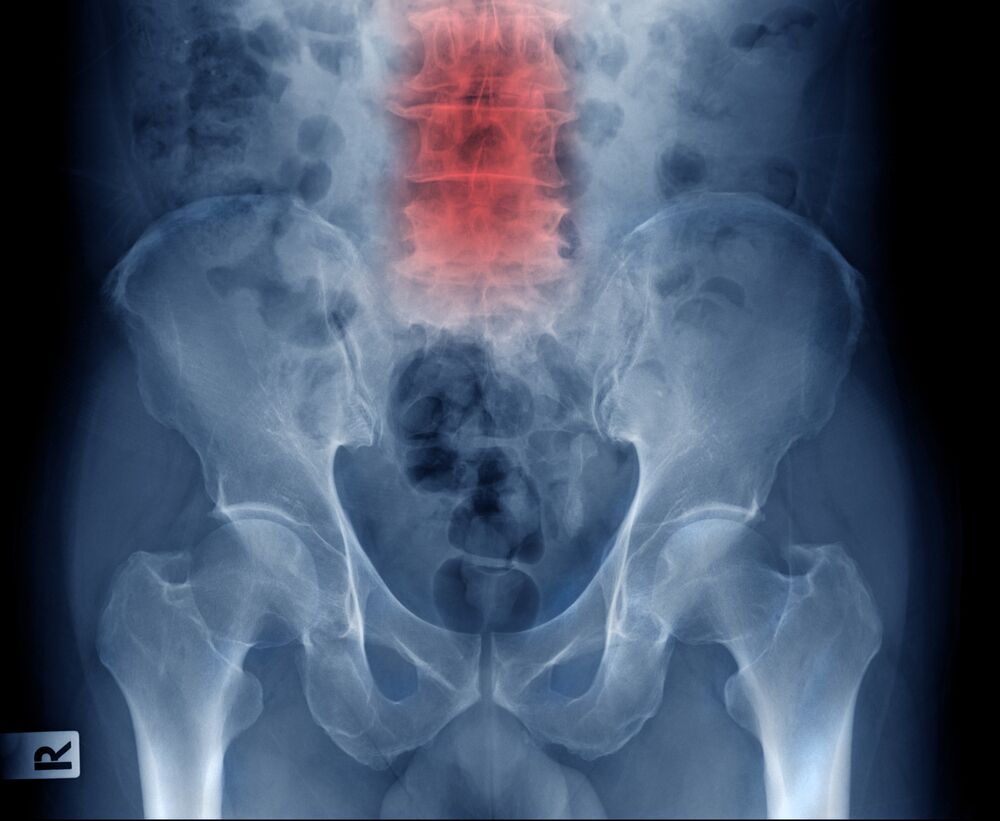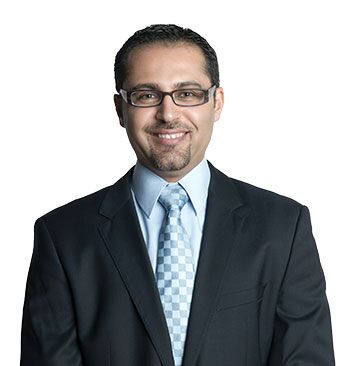Lumbar Spinal Stenosis

Lumbar spinal stenosis is defined as narrowing of the spinal canal in the lumbar region that may cause compression of the nerves and/or compromise to their blood supply, or ischemia. As a result, individuals with symptomatic lumbar spinal stenosis might develop neurogenic claudication, or pseudoclaudication, causing gradually progressive pain and/or discomfort involving one or both buttocks, hips, thighs, legs or lower back. The symptoms of neurogenic claudication are typically precipitated by standing, walking and leaning backward, and are relived by sitting, laying down in a fetal position, bending or learning forward, as when leaning forward on a shopping cart.
While lumbar spinal stenosis can result from a congenitally narrow spinal canal, most cases occur as a result of degenerative, or wear-and-tear, processes involving the lumbar spine. These degenerative processes involve mechanical changes of the intervertebral disc causing a decrease in the disc height and formation of osteophytes, or bone spurs, that take up some space from the spinal canal leading to stenosis. In addition, these changes involving the disc result in an increased load and stress on the facet joints located on the back of the spine. This increase in stress load on the facet joints leads to facet joints hypertrophy and enlargement, which would also contribute to the narrowing of the spinal canal. Moreover, the ligamentum flavum, draping the backside of the spinal canal, can also thicken as a result of these degenerative processes adding additional narrowing to the spinal canal. By flexing or leaning forward, the ligamentum flavum stretches out resulting in less narrowing of the spinal canal and relief of symptoms.
The diagnosis of lumbar spinal stenosis and neurogenic claudication is established based on the clinical presentation aided by appropriate imaging studies. Symptomatic lumbar spinal stenosis is most common at the L4/5, followed by the L3/4 and L2/3. In some cases the stenosis is seen at multiple levels of the lumbar spine.
Treatment of lumbar spinal stenosis typically begins with conservative non-surgical options, such as, pain medications, physical therapy, and pain management with injections. When symptoms are refractory to conservative treatment options, surgical interventions can be considered. The goal of surgery is to decompress the nerves, by increasing the size of the spinal canal, to stop further progression of symptoms, provide pain relief, and possibly reverse neurologic deficits if they existed.
Several surgical options exist for treatment of lumbar spinal stenosis. Decompressive laminectomy can be performed through an open or a minimally invasive approach and involve removal of some of the bone and soft tissue from the backside of the spinal canal. The procedure might be done with or without fusion. In some instances decompression can be performed with the use of a motion-preservation device that can provide stability to the spine while eliminating the need for fusion. If you have been told you need surgery for lumbar spinal stenosis, you should discuss with your spine surgeon the different surgical options available to you and decide on which option is best for you.
Mohamed Abdulhamid, MD
www.DrAbdulhamid.com
Follow Me on:
Facebook: https://www.facebook.com/DrMAbdulhamid
Twitter: https://twitter.com/DrMAbdulhamid
About The Author
-

Dr. Abdulhamid is a highly skilled and experienced board-certified neurosurgeon with a passion for providing exceptional spine care. He specializes in minimally invasive spine surgery and has a reputation for achieving outstanding results for his patients. His commitment to excellence and patient-centered approach have earned him the trust and respect of his patients and colleagues alike.
RECENT POSTS
Three Reasons to Turn to Physical Therapy for Back Pain
Did You Know: Your Diet Could Be Contributing to Back Pain?
Exploring the Types of Back Surgery: A Comprehensive Guide
What to Expect During Spinal Decompression Therapy
Tips on How to Maintain Good Spinal Health
How You Can Protect Your Lumbar Vertebrae
Reasons to Discuss Your Back Pain With a Doctor
Understanding Dorsalgia: Causes, Symptoms & Treatment
How to Relieve Lower Back Pain at Home
What is Lumbago? Causes, Symptoms & Treatment
What To Do When You Experience Neck Pain
What Is Ultrasonic Spine Surgery?
How to Do Back Exercises for Back Pain
Ouch! Lower Back Spasms - Causes and Treatments
Why Have I Developed Back Pain After Surgery?
The Purpose of Spinal Decompression Surgery
Three Common Causes of Lower Back Pain
How to Prevent Back Pain at the Office
The Best Ways to Sleep With Back Pain
5 Daily Exercises for Better Spine Health
Is Your Mattress Causing Your Back Pain?
Supporting Back Health While Golfing